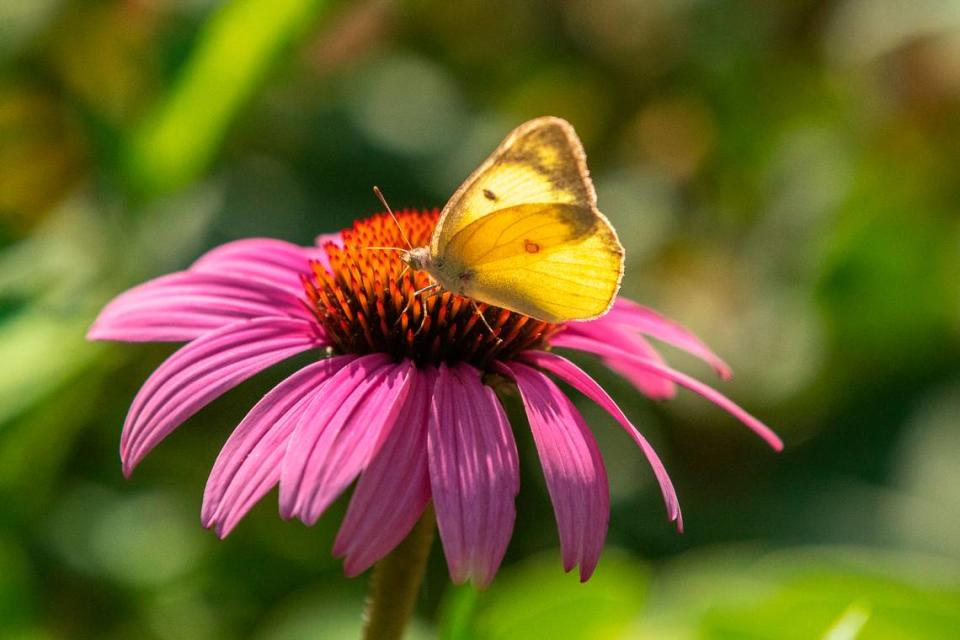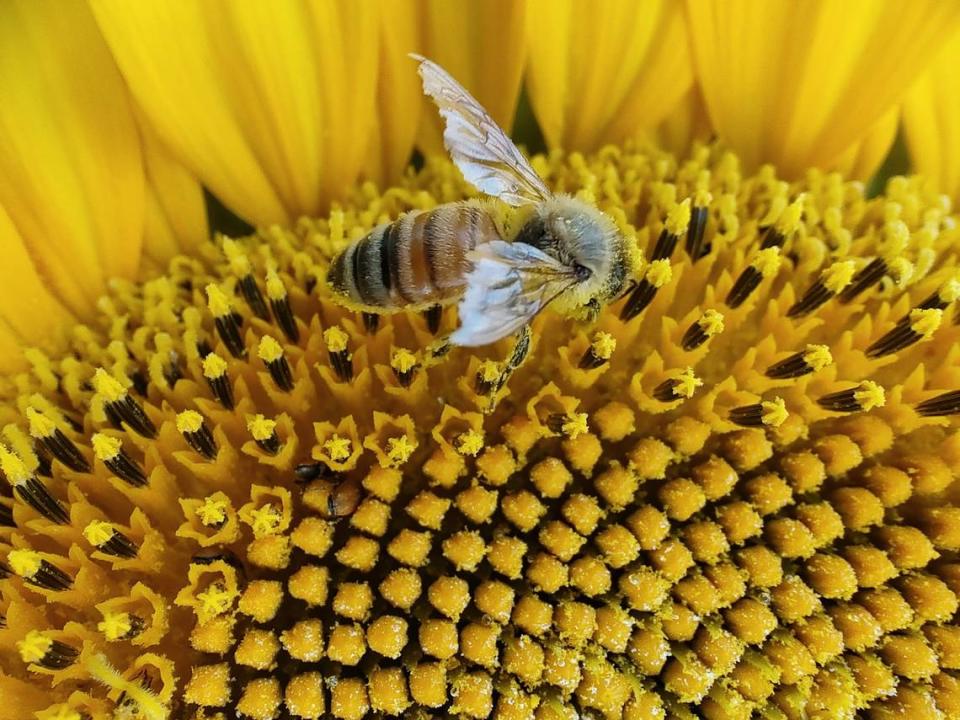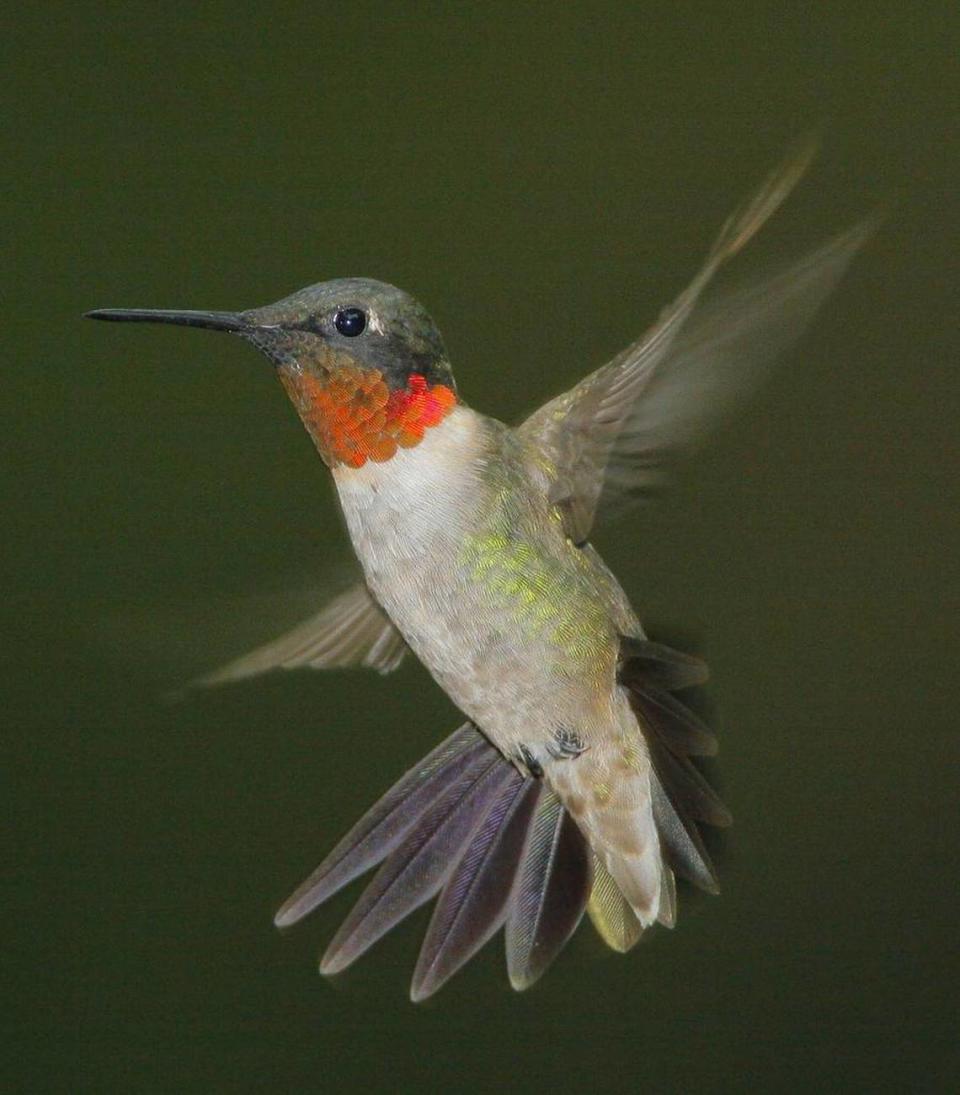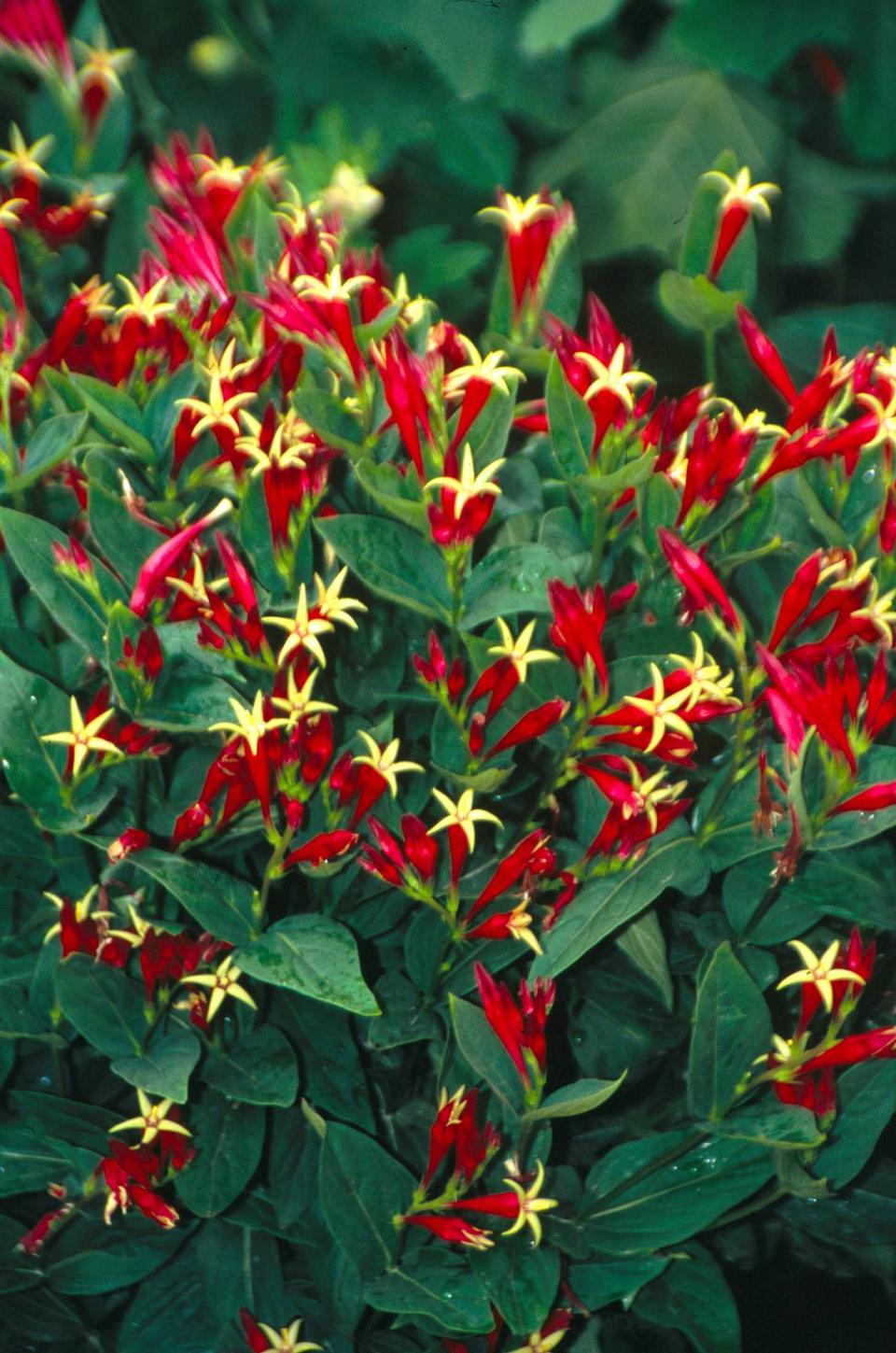Birds, bees and butterflies: Plant these Kentucky natives to draw them to your garden
The brilliantly blue pipevine swallowtail, the ruby-throated hummingbird and the American bumblebee are all native pollinators you can find right here in Kentucky.
The American bumblebee, in particular, is facing extinction and disappearing from entire states after losing 90% of its population in the last 20 years.
There’s more at risk than these fuzzy teddy bears of the bee world. Managed and native pollinators are necessary for U.S. agriculture to function. More than 90 different crops, including the apples, strawberries, peaches, pumpkins, melon and canola grown in Kentucky, depend on insect pollinators in particular to reproduce.
Ongoing problems with pesticide use, habitat loss due to development and the climate crisis threaten this integral part of our food system and the survival of other species that depend on pollinators.
While tackling these era-defining crises may seem daunting, you can make your backyard a haven for native Kentucky pollinators. Here’s a guide and list of recommended native pollinator plants if you want your garden to hum with life this summer.
Get your soil tested ahead of planting native Kentucky species
Before you crowd the back of your car with perennials purchased from your local garden center or nursery, you need to know what you’re working with in your backyard.
Establishing a baseline of your soil’s overall health will point you toward what you need to work on and what to sustain. You should also get a sense of how much sunlight your yard gets by observing it several times a day, but improving any soil issues will probably take more work, so start with that.
It’s best to start by getting your soil tested. You can get one from the University of Kentucky’s Division of Regulatory Services. Basic soil tests are just $6, and come with instructions. The division also offers several other kinds of tests.
What flowers should I plant for a Kentucky pollinator garden?

Butterflies
Nectar preference differs for butterflies by species, meaning you should plant a wide variety of nourishing flowers to get the greatest number of butterflies in your backyard, according to UK Extension Specialist Stephanie Bailey.
Bailey recommends the following varieties of flowers for attracting butterflies:
Aster
Black-eyed Susan
Butterfly weed
Daylilies
Lilacs
Coreopsis (also called tickseed, though it doesn’t actually attract ticks)
Lavender
Butterfly bush
Goldenrods
Marigolds
Oxeye daisies
Hibiscus
Purple cornflower
Redbuds
Rosemary
Verbena
You should also consider adding plants for females to lay their eggs and a puddle of water (like in a bird bath) for males of various species to gather at and form “puddle clubs.” These are spots where they cool off and socialize. Just make sure the puddle doesn’t turn into a breeding ground for mosquitoes. To prevent that, add a bubbler or mosquito dunks, which won’t harm birds, frogs or beneficial insects.
Be sure to check out Bailey’s full guide for more details about starting a butterfly garden in your backyard.

Bees
The following recommendations are courtesy of research scientist Bernadette Mach, Ph.D., who during her time as a student at the UK, painstakingly counted which plant varieties attract the most bees.
Her list of bee-friendly plants is available online.
Here are the native plants Mach found bees love:
Eastern redbud trees
Flowering crabapple trees
Common winterberry shrubs
St. John’s wort shrubs
Clethra shrubs
Winged sumac trees
The Kentucky Native Plant Society recommends choosing plants that offer shade and shelter so bees have cool places to rest when needed.
To keep bees around your garden longer, try making a bee bath. Simply fill a shallow dish with water and rounded rocks or pebbles. This offers a space for bees to take a break on a hot day and crawl down to take a drink from the water’s surface. Just be sure to frequently change the water.

Hummingbirds
To attract hummingbirds, like the beautifully iridescent ruby-throated hummingbird, the absolute best wildflower is the cardinal flower. It’s native to Kentucky and named after the red petals that resemble a cardinal’s feathers.
That’s according to the late Kentucky naturalist and UK Professor Thomas Barnes, Ph.D., who recommended several plant varieties for attracting these buzzy birds.
They include, in part:
Alumroot (Heuchera spp.)
Copper or red iris
Fire pink
Round-leafed and Carolina pink
Columbine
Various species of phlox, skullcap and beardtongue
Indian pink (Spigelia marilandica)
Wild bergamot (Monarda fistulosa)
Bee balm or Oswego tea (Monarda didyma)
Royal catchfly
False dragonhead or obedient plant
Cardinal flower
Monkey flower
Foxglove
Gayfeather or blazingstar

Where can I buy Kentucky native wildflowers for my garden?
The Kentucky Native Plant Society offers a list of native plant suppliers and producers on its website.
If you live in the Lexington area, Michler’s Florist, Greenhouses Garden & Design sells a wide variety of annual, perennial, temperennial plants. Its address is 417 East Maxwell St., and the phone number is 859-254-0383.
If you’re in the Louisville area, try Dropseed Native Plant Nursery in nearby Goshen. It specializes in offering native plant seeds and is located at 1205 South Buckeye Lane. The nursery can be reached at 502-439-9033.
Alternatively, if you can’t find native wildflowers near you, contact your local extension office or the Kentucky Department of Fish and Wildlife Resources for a list of native plant nurseries at 1-800-858-1549.
Do you have a question about wildlife in Kentucky for our service journalism team? We’d like to hear from you. Fill out our Know Your Kentucky form or email ask@herald-leader.com.

